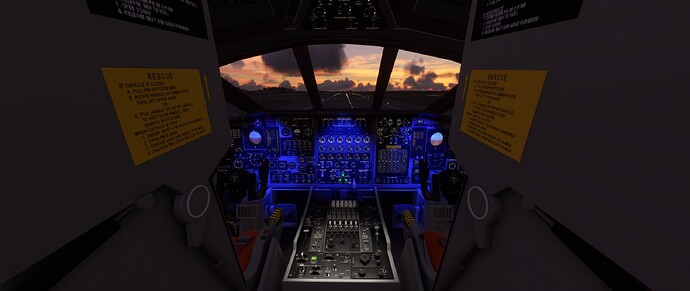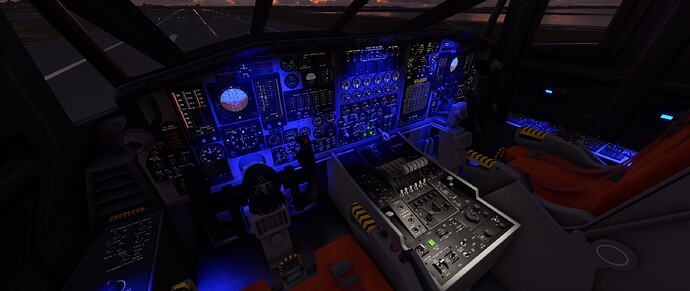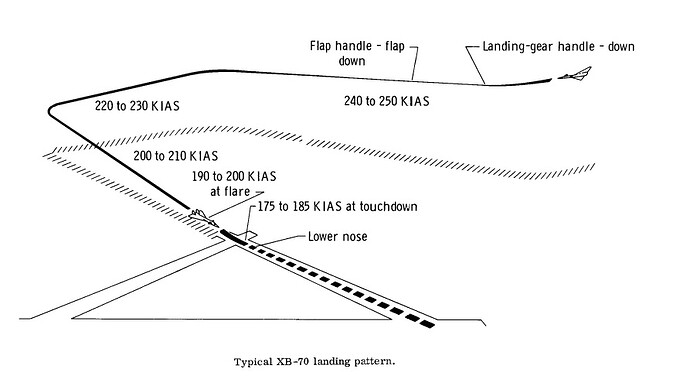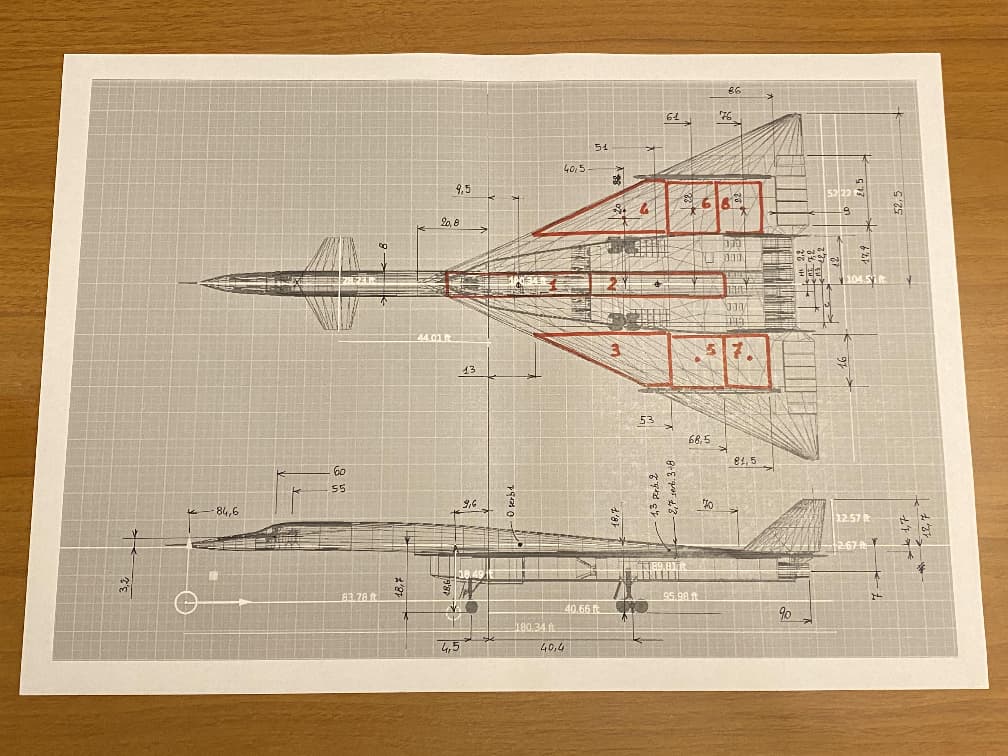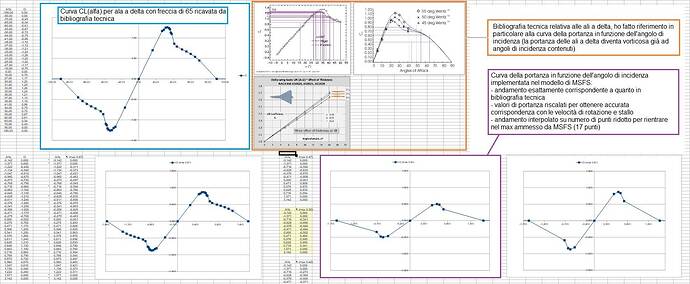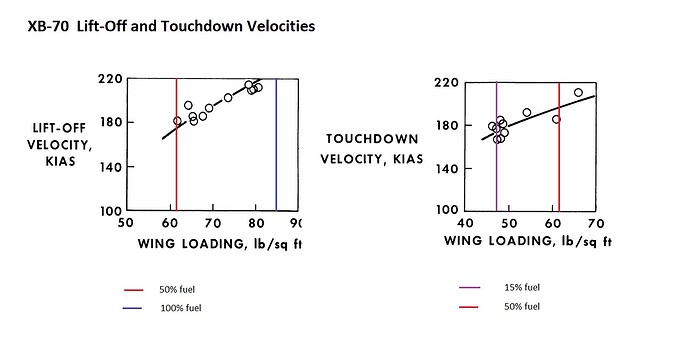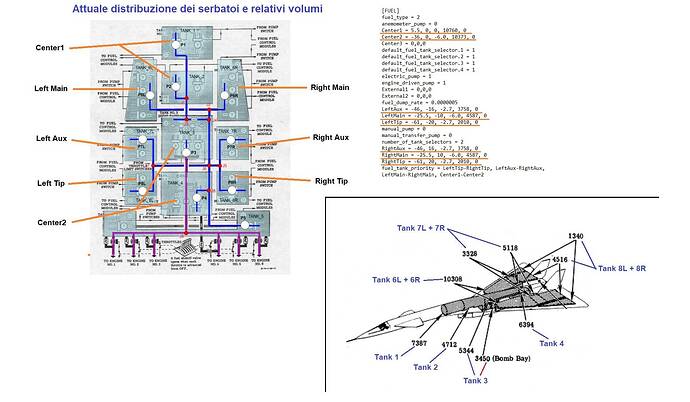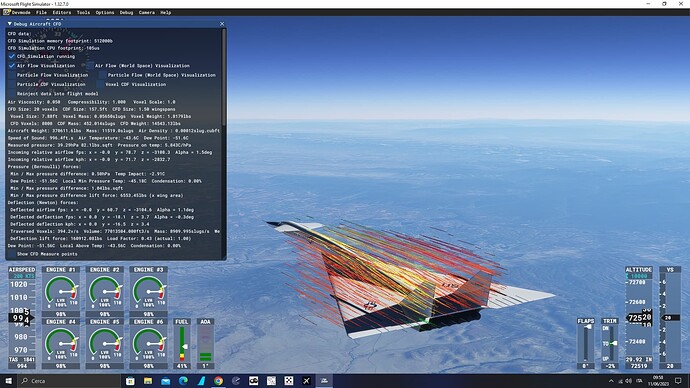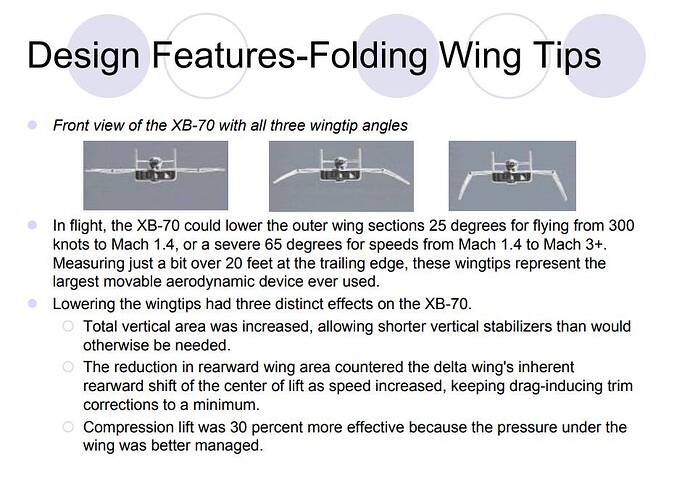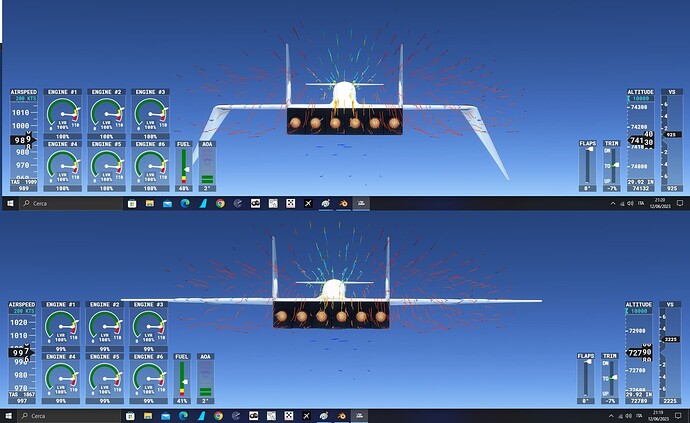I am sure in saying that whatever your choice is, the community will support this project, I for one will.
A question, are you modelling this on AV1 or AV2? as there are a few differences between them, if you need help with identifying them I really don’t mind helping.
I think it’s better to sell it for a small amount, $10-$20. This thing deserves to be sold and people appreciate the effort being put.
Sell it and keep improving, and then do the B-58. You’ll have 2 great projects that would keep bringing smiles to people’s faces and, at the same time, some money to keep going forward.
This looks to be a fantastic addon. It’s not something I’ve been waiting for but I really enjoy seeing these labours of love, especially for projects that never came to full fruition IRL.
The “Early access period” method of marketing sure works for Eagle Dynamics on DCS. They offer the module at a discount with the understanding that it is a work in progress with not all systems functional and certain elements that still need further development. Following the full development cycle, the price increases to the non-discounted amount.
A similar approach was taken by FlySimWare with the Cessna 414AW on MSFS.
I think we all just want to make sure that you are compensated for your work on this sufficiently to ensure that you are inspired to keep going!
I completely understand your reasoning and strategy. I will of course hope that you can get the project to a point where you are comfortable offering it on the in-game marketplace. But I admit this is a strong motivator for me to consider making the jump to PC ![]()
EJIRO, if you can afford it I definitely would recommend a PC, especially if you can get in VR or at least multimonitor. I have been simming for more than 20 years and the level of enjoyement with this equipment and the detail and realism are far beyond the expectations I had 5 years ago.
In addition XB70 will look stunning and you can have better periferals for PC than console.
Obviously only if you have the money right away, don’t get on financial trouble for this, you can always start more basic and add things as soon as you have the money.
Very impressive, although blue light probably didn’t went in production but who cares? ![]()
The work is progressing stuningly fast although you my think not. If you can out it in a beta program even at full price I would gladly support it.
As a personal opinion, I would keep the option to licensing it as bsd or other free licensing if at any time you feel you can’t keep working on it. The reason is that I think is so well modeled in all aspects that can be useful for future developers to use it as a base line for any commercial supersonic aircraft.
Of course this doesn’t mean you can not make your well deserved money that we will all gladly pay you, but please, don’t keep it private if the community is glad to support you.
Why do you think the blue light didn’t go in production? The surviving aircraft at the museum has the blue lights installed.
Because I though that was a prototype. Blue light enhances awareness at night flight, so is a good idea but also blue light is the least detected in our eyes.
Yeah… we desperately miss pictures from N2 prototype…!
I always think that they should have used the N1 for that fatal (and to me absurd) publicitary flight,
and “acrobatic” manouvres …with a some billion dollars, secret airplane!
Maybe the improvements were also on the cockpit and not only on the functional and structural parts.
Anyway, no complaint is reported about the gauges readability in pilots reports, (AFAIK).
And, most important… it looks good ! ![]()
![]()
Wow… everytime i open up this thread, i’m met with something more and more amazing.
Great work Airmax, love it!
This is going to be absolutely incredible. The more I scrolled, the more excited I got. Cannot wait to buy this aircraft.
Here is the - maybe nearly definitive - cockpit lighting.
All lights are dimmerable by the overhead knobs : pilot panel, copilot panel, engines panel, overhead and pedestal, blue floodlight.
I think that could go. Changing colour is only matter of changing 3 numbers of RGB in custom effects folder.
Greetings -
Massimo and myself thought interesting for the amazing community of this thread if I give you a ‘behind the scenes’ hint of the XB-70 flight model development (WARNING - be prepared for the following wall of text ![]() )
)
Indeed I am an italian aeronautical engineer, working in industrial technologies department of italian jet engine manufacturing company
Being a passionate simmer myself (started to fly virtually a looong time ago in my teenage years with SubLogic FS2 on the Commodore 64 @ 1-2 FPS), when I read this very thread from Massimo and saw the amazing pictures of his XB-70, I offered him support in developing the flight model for the aircraft
Having his enthusiastic approval, I started documenting myself on MSFS SDK and the XB-70 flying characteristics, aiming to replicate as faithfully as possible the behaviour of this unique tri-sonic bomber
Admittedly I am experimenting and learning a lot along the way, what is best I hugely enjoy the cooperation with Massimo whose dedication and enthusiasm is to be behold!
Also, we have in the Team our secretive Chief Test Pilot whose great attention to the details and constructive comments pushes us ahead anticipating the expectations of the community
At the current development status, the flight characteristics of the XB-70 are as follows
The airplane is capable to reach 72.000 ft and Mach 3 following the published climb profile for Mach 3.0 cruise flight, that is to say:
- climb up to 20,000 ft accelerating to Mach 0.9
- climb up to 30,000 ft without exceeding Mach 0.9
- acceleration to Mach 1.5 maintaining constant altitude 30.000 ft
- acceleration climb up to 70,000 ft and Mach 3.0
It takes approx 20 minutes to reach the cruising altitude and speed, with afterburners always on
Notably, during the transition from Mach 0.9 to approximately Mach 1.1 happens the rearward movement of the aerodynamic center which re-stabilises from Mach 1.2 onwards (this displacement should be compensated with the fuel transfer between the tanks but this function is not yet introduced), anyway it can be esily controlled with the trim (but be careful not to lose too much altitude while breaking the sound barrier!)
Accelerating climb from 50,000 to 70,000 ft requires careful use of trim to maintain correct attitude and speed because at very high altitude and high speed, the pitch control using the yoke is not enough precise, as very small movements of the yoke will cause large excursions in vertical speed
The trim allows much finer control of vertical speed and expecially the latest 5000-6000 ft require some pilot concentration to achieve stable cruise conditions
Notably, the XB-70 sensibility in pitch at very high altitude and high speed is indeed reported by the real test pilots, who experienced large variations in vertical speed (up to +/- 3000 ft/min) at Mach 3.0
In flight at very high altitude and high speed the XB-70 the lateral control is ‘sluggish’ as can be expected by the very thin air, maneuvres must be planned in advance and executed with very light touch, anticipating the exit
Other two behaviours reported by the real test pilots and properly captured are the low stability in yaw (mainly due to the small vertical fins an rudders) and the ground effect generated by the large delta wing, these are both reproduced in the flight model
Also, do not expect the XB-70 to maneuvre like a jet fighter, it is a large and heavy aircraft not suited for aerobatics (the maximum allowed flight loads are merely +/- 2 Gs with a safety factor of 1,5)
In the words of our Team Chief Test Pilot:
“The flight model is amazing, it really feels like a combination of a jet and a 747, like a jet because with the delta wing if you cut power you just fall from the sky so you always need to keep some power when landing. And it flies like a 747 because it is heavy and I think has perfect responsiveness to controls.”
Some limitations showed up during the development for which I have not yet a workaround, mainly the possibility for the XB-70 to reach ridicolously high altitudes and the tendency to accelerate beyond M3.2 (if experienced developer would lend some help to me, feel free to PM me to keep this thread as the XB-70 development update)
Rest assured I will continue the development of flight model and engines model following and doing my best in complementing Massimo awesome work
Hope this update was intersting and let me greet by saying that, staring at the world and clouds moving visibly below and behind you is, well… priceless!
All the best until the next update
Marco
P.S.: let me add some research and development images for you to enjoy and scrutinize!
The real flight envelope of XB-70 - Can be flown accurately
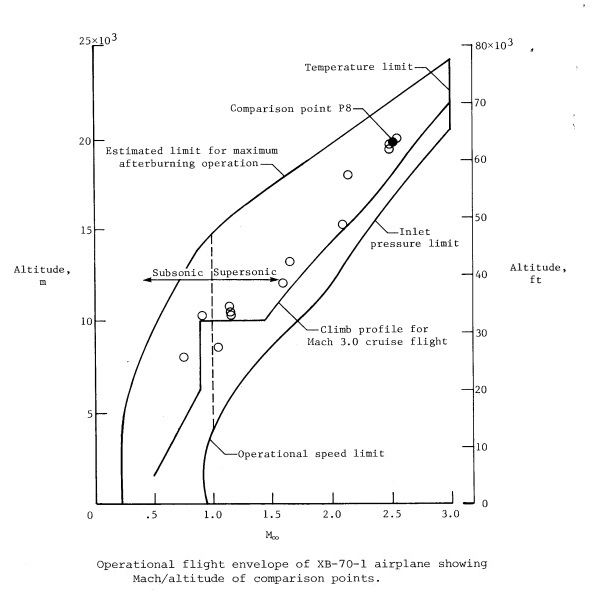
The real circuit pattern of XB-70 - Must be flown accurately!
Marco’s drawing board ( yes, old school indeed ![]() )
)
Modeling the CL-Alpha curve of the XB-70 delta wing (sorry for the notes in italian)
XB-70 takeoff and touch down velocities
XB-70 fuel tanks volume, weight and position
Mighty XB-70 in flight, M3.0 at 72500 ft
Pretty awesome, I gotta say.
Do you think you will need to balance realism with “flyability” for those of us not trained in the finer details of supersonic high altitude flight? ![]()
Heya -
to be mastered, the current flight model requires light touches on the controls, pilot being attentive to the airspeed and throttle, in particular during approach and landing because of good control of airspeed is required and position awareness due to the nose-up attitude
But don’t be afraid, with a bit of practice it becomes easier and rewarding to put the XB-70 on its pace
Massimo and myself indeed thought about opportunity to release the XB-70 with 2 different flight models, one oriented to the ‘hard core’ simmers, the other more forgiving and suited for more causal Simmers
Rest assured will be easy for me to make the second one if the community so desires (and I will be happy to do!)
Cheers
Marco
Better have the 2 flight models, it will have a wider userbase…
Not to nitpick, but if that’s Mach 3 cruise, the wing tips should be canted down (by about 40 degrees, I think?). The folding wingtips helped maximize the compression lift generated by the bow shock, and also moved the center of lift forwards to improve trim. Two things I strongly doubt are actually model-able in MSFS… ![]()
Heya -
yes, your observation is correct: the XB-70 used to lower the outer wing section 65 degrees for speeds from M1.4 to M3+ with several benefits (summarized in the chart below)
The outer wing section of the 3D model can indeed be lowered by 25 and 65 degrees, but currently the effect is a purely graphical one
The following two images, taken few seconds one from the other at M3.1 and approx 73000 ft show the airflow visualization around the wing and body with folded and un-folded tips, the different position do not affect the flow in any visible way and it appears to be identical between the two situations
My understanding is that MSFS aerodynamic calculations take in account the airplane geometry as defined in the flight model file, but not its 3D shape
I tried to ‘cheat’ the flight model by deliberately reducing the wing lift at high Mach velocities to compensate lowering a flap surface (to simulate the compression lift) but so far without success

